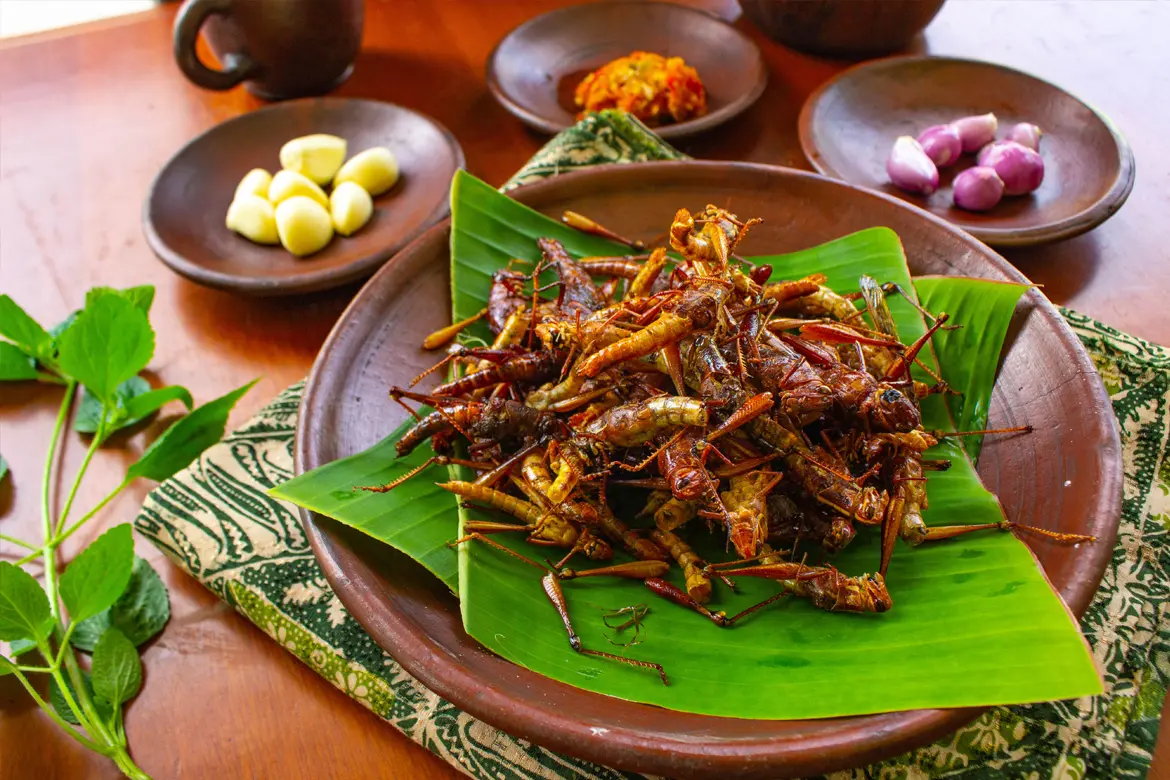The Singapore Food Agency (SFA) recently gave the green light in 2024 to eating 16 insect species including crickets, mealworms, silkworms, and grasshoppers. This move followed rigorous food safety evaluations.
As these crunchy critters start appearing in supermarkets and restaurants, it’s a great time to explore what these new food sources mean for your health and the planet.
Are insects safe to eat in Singapore?
Yes, insects are safe to eat when approved, farmed and prepared under SFA’s insect regulatory framework and in line with its food regulations. The recent approval applies to species that are already commonly eaten in parts of Asia, Africa and Latin America, such as crickets, silkworms, mealworms and grasshoppers.
Just like any other food, proper handling and hygiene standards are key. If you are allergic to crustaceans like shrimps, you may also react to insects. Check with a doctor or speak to a dietitian if you have known shellfish allergies.
Health benefits of eating insects
Insects pack a surprising punch when it comes to nutrition and health benefits:
- High in protein: Certain insect species, especially in dried or powdered form, can be exceptionally high in protein.
- High in essential amino acids: Insects contain up to nine essential amino acids that help build and repair tissues.
- Low fat: Edible insects are known to be low-fat and high-protein, aligning with sustainability by the U.N. Food and Agriculture Organization.
- Provides important micronutrients: Many edible insect species provide important micronutrients such as iron, zinc, calcium, magnesium, and vitamin B12. Their fats are generally rich in unsaturated fatty acids, including omega-6 and omega-3 in some species, though levels vary depending on the insect and its diet.
- Contains natural antioxidants: Some insects contain beneficial compounds with anti-inflammatory and immune-supportive effects in early studies.
- May support bone health: Some insect species contain antioxidant compounds and may have bone-supporting properties in preliminary studies. However, most research so far is in laboratory or animal models, so more human studies are needed before drawing firm conclusions
- Gut-friendly fibre: The exoskeleton of insects contains chitin, a type of dietary fibre that may act as a prebiotic to support gut health. While early research is promising, human studies are still limited.
Environmental benefits of insects as food
Adding insects to our diets doesn’t just benefit us, it is also good for the planet and sustainability.
- Sustainable protein source: Insects require far less water, land and feed compared to traditional livestock. They are considered a green food source to help climate change.
- Efficient to farm: Insects grow fast and reproduce quickly, increasing agricultural efficiency.
- Lower carbon footprint: Insects emit fewer greenhouse gases compared to cows or pigs.
- Less waste: Almost the whole insect can be eaten, reducing food waste.
- Reduce land use: Insects can be farmed vertically, reducing the use of agricultural land.
Traditional and modern insect dishes
Insects are now appearing in a wide variety of foods:
- Savoury snacks like roasted crickets or silkworm pupae, similar to potato chips
- Baked goods with insect flour, used in pasta, bread, or muffins
- Protein bars or powder made with cricket powder
- Restaurants are creating insect-infused dishes such as salted egg crab with superworms and insect satay
If you are ready to try, start small when eating insects. Mix insect flour into protein shakes or pasta. Or try a bite of a crunchy roasted cricket and see what you think.
Over 2 billion people practice entomophagy (eating insects). 2000 species of insects are on plates regularly, from South Korea to Thailand, France to China. This includes beondegi (a traditional Korean silkworm snack), belalang goreng (fried grasshopper), and honey bee larvae consumed in Australia and Thailand.
Properly-prepared insects are a nutritious and green food source
From nutrition to sustainability, edible insects offer plenty of promise. With recent regulatory approval and growing interest in sustainable eating, Singaporeans who are ready to try edible insects can now enjoy this exciting food trend.
If you're curious about how edible insects may fit sustainably into your diet, book an appointment or speak to a dietitian today.













